Kasaiku a new social network for business
 Kasaiku is the brand new player on planet social network. It enters into the category of business networks such as Linkedin, Plaxo, Naymz or Xing, but the difference is on its content and the way it is presented, bit more linke Facebook or Bebo. It provides its users several applications: live chat, the possibility to create groups, events, post pictures or business video’s or even video CV’s which is the brand new way to show talented people their skills by presenting themselves in a 2 minute video appearance. Everyone can be traced, connected and invited. A mashup permits to use Google maps for events or to locate friends.
Kasaiku is the brand new player on planet social network. It enters into the category of business networks such as Linkedin, Plaxo, Naymz or Xing, but the difference is on its content and the way it is presented, bit more linke Facebook or Bebo. It provides its users several applications: live chat, the possibility to create groups, events, post pictures or business video’s or even video CV’s which is the brand new way to show talented people their skills by presenting themselves in a 2 minute video appearance. Everyone can be traced, connected and invited. A mashup permits to use Google maps for events or to locate friends.
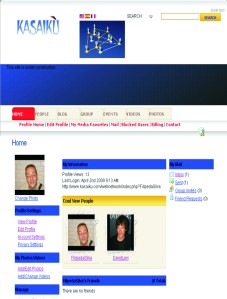
Its CEO Filipe de Sousa is optimistic about the future, Kasaiku will be a reference for business and for job search, the easy search bottom permits anyon find other kasaiku profiles and inviting them to become friends but also companies can be invited and vice versa, in order to increase business opportunities. Kasaiku plans to use Virtual worlds in the future in order to organize virtual business meetings or job interviews.
Kasaiku.com has all the ingredients to become a success story.
to register : http://www.kasaiku.com/webnetwork/index.php?page=register
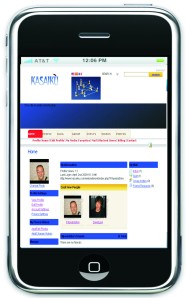
Kasaiku on Iphone
Twitter: The liberty of expression
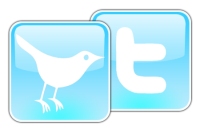 Since it start in 2006, Twitter has become an important public diary and news reporter. Twitter is considered to be a micro-blogging, but it is much more than just a place where people update their current status, moods and affairs.
Since it start in 2006, Twitter has become an important public diary and news reporter. Twitter is considered to be a micro-blogging, but it is much more than just a place where people update their current status, moods and affairs.
Twitter is a service that enables its users to post text messages on their profile that can be followed by other users (or so called tweets). The users can than itself follow other users with their updates. If a user is connected with a certain amount of tweets than it can follow every update made by them in real time. This application can also be followed on your mobile which enables the user to update very quickly. Reporters around the world use twitter to be updated realtime with news events around the world. Twitter can also be used as a advertisement tool to promote events, products or services. The key to its success is its simplicity. The freedom to be connected to the world and to be updated has rushed organisations and companies to use twitter as a first contact for news delivery. The BBC and CNN uses their own twitter account independently from their reporters.
The World is in our hands

We all remember in the late Eighties, when the first handphones were developed by Motorola, a huge phone with an antenna of more than 25 cm long ! It was long after the first fiction phone from a distant future in Star Trek where the famous sentence was pronounced by William Shatner (alias Captain Kirk) when he calls his operator back in the mothership the Enterprise: “Beep me up Scotty”. Fortunately mobiles have been developed into mini workspaces where people can not only contact each other but make video conferences and use internet to share, collaborate and work from distance.
All the players in the market agree that the future is in our hands, specifically at the top of our fingertips. Thanks to Third generation smart phones a person is able to work without being on his desk. You can share and transfer your files, using smart softwares such as Windows mobile, but you can also use google and its free documents and workspace application. Third generation phones, let us call them 3GM are not only more interactive to users but it can be personalized and updated with new and smart applications for all sorts of use.
Social networking can be used without any problem, you register and update your profile with your 3GM. You can access Linkedin by just clicking the icon on your desktop. Change your profile or update your status, download your contacts to your phone, search for people you know on Facebook, upload or download pictures and videos on flikr and youtube.
Google for examples offers some breathtaking tools and features in order to render our lives more spicy. Thanks to Google maps you can pinpoint your location and use it as a GPS, than you can download a game based on your location, where you can compete with other players in your area, completing missions, like the first to be at a certain place near a monument or a famous statue. Iphone offers another application, whoswhere where you can see your friends that are in the neighbourhood in order to ask them to join you to a party you have just been informed. You can even play online games on your phone with others. The thing is that 3GM need to be connected to internet in order to be updated. Google has released recently their 3GM that will compete with its price and originality with Iphone and Blackberry, based on free software.
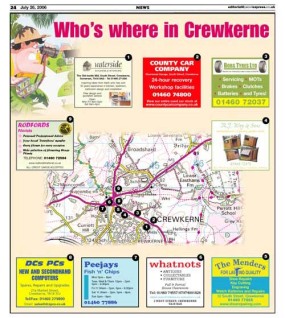
Your road trips will be more efficient thanks to Trapster, a Google application that enables you to know (with a vibration) where are located the “Speedometers” so you will have the time to slow down your velocity.
Mapsbuddy is another interesting application that works on Googlemaps, it shows you restaurants, clubs and bars in the neighbourhood (it knows exactly where you are), but the good thing about this application is that it shows you ratings by people who have already been there.
It happened to everyone to stop in a country for lunch or diner without knowing the place and than begins the chase for a good restaurant. Do you see yourself in that situation? What happens next is the law of Murphy in action, the place is dirty, the prices are to high, the quality is low, the service is non existent ! but unfortunately there is no place left at walking distance, but perhaps thanks to Mapsbuddy you can be alert and stop a few kilometres further.
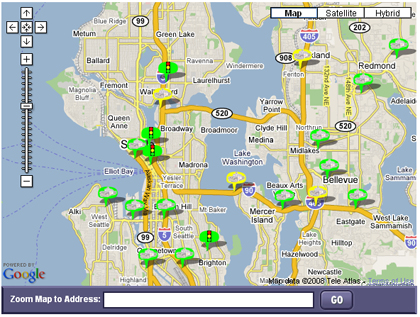
Sports tracker is another jewel application for Nokia smartphones, here you can train with you friends and gain miles running in the streets, already millions have downloaded the software.
In the future other smart application will emerge and the mobiles will be the next level of interactive network between people. In the future 3GM and 4GM will be used to do anything in our lives, from the virtual world to the real world; from buying clothes (your Sim card will be your ID card and Bank card at the same time), being a tools at school to your workspace. Therefore people will have more free time because it won’t be necessary to work in the office but from home or from some beach in the Caribbean.
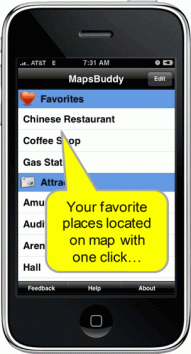
Generation Gap in social networking
The study of generation has stated that people of different generation react differently and have different patterns of behaviour towards internet and its use. O’reilly’s Web 2.0 philosophy and use of interactive online softwares that enables users to contribute, collaborate, comment, participate and even develop and create are typical GEN Y tools. The Baby boomers which are responsible for the world’s order and economy of today are simply watching their grand children (generation Y) creating and developing a new kind of economic environment, all that with a few clicks !
Generation X are those who are the inventors of the roadmaps of the internet, while Generation Y are the builders of cars inside these roads ! The next Generation, Gen M will look at generation Y and laugh at the use of a laptop in order to create an interactive website, GEN M is growing into a mobile world where you have fully virtual workspace at the palm of your hands ! They will build an economy that is 10 times faster than today ! where people will go virtually on holiday ! ok ok that’s too much science fiction !
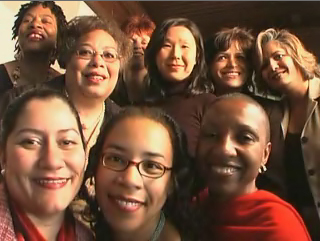
In order to give you an overview of the personality of every generation specifically I have interviewed some psychologists mixed with a timetable of internet evolution and Voilà :
Generation Baby Boomers: Post war generation, grew with a strong believe in human freedom, freedom from a system, system of control and pressure. They are the contributors of peace rallies around the world. They are more conservative. They were born after the Second World War and influenced From 1960 till 1979. .
Generation Jones: was the generation of actual children in the 1960s, which came of age in the middle to late 1970s and early 1980s. Their approach with new technology is for the most strictly for work purpose or for example for a specific use such as messaging a family member or using a search engine.
Generation X: is the generation born between approximately 1965 to 1980, are the first to use computing and the internet. They are the programmers and love technology, but are still argues the value of sharing knowledge with the crowd, they generally are connected only to their dear friends on Facebook. A few of them use social networks only for specific purposes, money, business or work.
Generation Y: is a very large generation born between 1981 and 1995. they are often called the Millenials, this generation are the promoters of a new interactive web of sharing and collaboration. They understand the use of a fully interactive internet but not so much its backbone, they develop, mashup, use API to their website and share on a peer to peer level, they are mostly anti-global but work with the world online. They walk around with their laptop at school as if it was a walkman back in the Eighties.
Generation M, or mobile generation are born from 1996 to present, they will work in a more interactive world. They are not seeking money, but notoriety, based on project concept and not on a contract. They like to travel the world, learn languages they interracial and seek an approach with different cultures on every level of communication. They don’t like the idea of being bond to a place or culture or company. They will probably assist to a new frontier human perception of itself.
Crowd Relationship
Crowd Relationship
 In the real world you have different types of connections. The very first connection is your family direct family; mother, father, sister or brother. This connections goes as far as cousins of second degree. When you grow up, you create bonds and relationships with people at school, which once again creates friendship till the second or third degree of friendship, so called friends of friends. As an adolescent you will have relationships of close bonds such as a girlfriend or a boyfriend.
In the real world you have different types of connections. The very first connection is your family direct family; mother, father, sister or brother. This connections goes as far as cousins of second degree. When you grow up, you create bonds and relationships with people at school, which once again creates friendship till the second or third degree of friendship, so called friends of friends. As an adolescent you will have relationships of close bonds such as a girlfriend or a boyfriend.
Nevertheless, the choices taken in your life makes you lose friends and bonds between your relationships. If we look closely, the average person in the Western countries loses 80 % of its first relationships in his life, remaining just a small fraction of the people known. It is also a scientific fact the a person becomes more choosy when he grows up. At the adult face a person distinguishes by order of importance; family, love mates, friendship, relations, business relations and enemies.
- Family is the first circle of trust created by a person, it is limited to parents, brothers and sister, children and grandparents.
- Love mate(s), refers to love relations and its different categories, girl or boyfriend, husband or wife.
- Friendship; are generally people who play an important role in a persons life, they generally share a similar personality, background, experiences, tastes or hobbies. Here you can count some relatives such as cousins.
- Knowledge Relationships, are people who have at a distance a relationship with a person, generally those people are friends of friends of friends…. They have been in contact with the person a few times in his life, sometimes you see them often and sometimes they don’t show up for a very long time. This category can also be some sort of a place where a person puts the old friends he has not seen anymore or does not contact as often as previously.
- Business relationship, are people you work for or work with, both upwards as downwards, it can also be your teachers which basically you have done business with; they teach you, you learn, you get rewarded ! Business relations can sometimes be relations after doing business.
- Last category, but not do be dismissed are enemies, which in some cases can be really disturbing. Enemies are relations or friendships gone wrong, misjudgements and arguments are generally the basis of this rupture of this relationships.
Today the concept of relationships is at the centre of the media due to social networking sites which all together combines all this different types of relationships. People find friendship with people online, because they go to groups and networks that are somehow related to the persons feelings and personality. People find love online, they even marry thanks to the internet, business relations are created between people who perhaps never had the change to meet in real life ! only advantages folks.
The thing with social networks is, that it has created a new kind of relationship, crowd relationship.
Crowd relationships are people who work together with you in order to develop a project, a business or a home work. They help you to find a solution to a situation. Take an example of Ecademy or Linkedin:
Some people post a job by message to all his connections (most of them he or she does not know).
On Facebook, Myspace or Bebo a word to mouth message goes when someone is asking some advice on a product or a service. Crowd relationship is related to crowdsourcing where companies tend to search solutions within an extern relationships or with its clients.
In the business world, crowd relationships are becoming an emerging power of resources of business development. It strengths ties between companies and clients, in every level; B2C, B2B, etc.
There are two kinds of Crowd relationships, Under the line CR and Above the line CR:
Under the line Crowd Relationship is a more private an personal relationship with the crowd in our network. Example: you are searching for cheap flights to Barcelona and you ask your friends on Facebook if someone knows a cheap hotel in Barcelona ? Your friends may not know but they will forward your request to their friends till someone knows the answer to your problem and decides to post a message in order to help you out.
Above the line Crowd Relationship: This kind of relationship is when your network is used to resolve your work. Example: you are a recruiter and you are desperately looking for a SAP specialist, you send a message to all of your contacts on Linkedin and ask for help, who knows maybe they know someone?
The truth is that Crowd relationship is sometimes a one way relationship, only a few people respond to a request of someone they do not know. But the awareness of using those relationships are growing among companies who use so called enterprise 2.0 tools in order to profit from internal crowdsourcing. Some internet prophets are predicting that crowd relationships will be an emerging economic power to be taken very seriously.
Social network classified
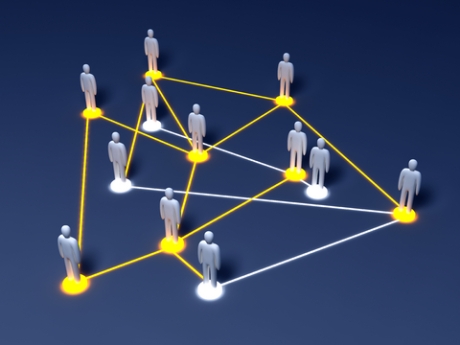
Social networks can be classified into 7 categories based on their purposes:
- Love and dating networks
- Friendship networks
- Business networks
- Job and Talent networks
- Communities (based on branding and companies, groups and fan clubs) and Knowledge networks
- Games networks
- Virtual worlds
The first kind of networks are Love and dating networks were amongst the first kind of online networks such as “meetic” or “Date.com” . It allowed users to find their matching in love. It was directly followed by more adult sites such as “Adult finder”. Love sites were immediately accepted by the public due a lack of social behaviour of urban youth. Millions of people around the world registered to those dating sites in order to find their love mate. According to Gartner, this sites are came into a mature fase in 2004.Today must of the people tend to seek their future love mate through Facebook or myspace were you have a broad view of the personality of the person you try to contact, sort of “tell me how are your friends and I tell you who you are”
Dating sites does not give a clear view of the person behind the profile thus the person can enter a false identity or even lie about his characteristics.
The second kind of networks who followed closely and logically the dating sites are “friendship networks” . The first to emerge were Classmates in 1995 and Friendster. Both are still found on the web besides being surpassed by younger social networks such as Myspace, Netlog or Facebook. Mainly due to the lack of a Multilanguage platform, but also from funny applications and friendly graphical structure. Myspace is considered to be a revolution in social networks and are considered to be the MTV of the web because musical talent can be discovered. Indeed Myspace is for the web what MTV was in the eighties in the music industry, Deejays, Musicians, singers and others gather together to share talent and promote talent. Must of this friendships sites started with students and developed into a more mature fase, first because those same students became part of the work system but also they spread the word and the trend (Facebook phenomenon). One thing in particular became clear for employees in their companies, youth organized quicker a party in a view clicks on Facebook than employees on outlook for their work meetings ! It became clear that the next level of network would be for professional purpose, therefore we come into the Third kind of network; “Business networks”.
It is clear that people inside companies had the necessity to keep track of their former employees not only for friendship but for sharing knowledge and to know what they had become. Sites like Linkedin, Xing, Plaxo, Viadeo and Naymz are sites were you can upload your curriculum on your profile. You become traceable to anyone who is interested your profile, whether it is for a career opportunity, a reference, a business deal or an introduction to a service or a product, once you are on a business site you are their because you want to be seen. Business sites can be defined into two kinds of networks, close networks and open networks. Close networks, users can only subscribe by invitation, asmallworld.com is a good example, this website was created for and by elite people in Europe, someone inside has the opportunity to invite a definite number of persons. Its users trade luxury goods and gather for special events.
Open networks concede a free registration to all users. Once registered users have several tools to search, contact and collaborate into different levels of the network. Even here free users have limitations, in order to monetize these networks, premium account have been created in order to permit its members to contact anyone inside the network without limitation. Linkedin provides its premium users only 5 INmails per month, that if not used can be added to the next month.
Viadeo and Xing have a different approach they allow their premium members to use fully their tools without limitation.
Since these networks have profiles of millions of professionals whom are passively open for career opportunity, several Recruitment firms used these tools in order to scout talents globally. Which resulted in the necessity to add job boards and company profiles to promote employer branding. This eclipsed jobsites such as Stepstone, Monster and Careerbuilder, who are changing their business models into a more friendly and social model.
The other kind of business network is “Ecademy” (which was found by Thomas Power) based in the UK. This is a “must be” for business. You can find investors or locate partners, create join ventures and find clients for your product and services. For a small fee users can benefit from their premium “Blackstar” account and be promoted on the network.
Job and Talent networks are similar to business networks, but are specialize into career opportunities. In this category you can find the renewed classical job and talent sites such as Careerbuilder or Monster and Stepstone but also freshly and more friendly sites such as Zumeo or Kasaiku. The registration of these sites are free, the only fee asked is for job posting by companies. Since these sites are specialized into career opportunities, they provide companies tools and application in order to facilitate their search for talent. On the other hand they have sophisticated tools for jobseekers in their search for jobs.
Communities is a category where I regrouped all the websites where people can innovate, share, collaborate to its content or develop its structure. These communities regroup people with the same interest or the with the same goals. It can be divided into two kinds, close communities, which can be companies or closed groups communities such as enterprise 2.0 where a group of people work together virtually for a common goal or even groups of scientist working for a purpose such as sharing knowledge or innovation “Innocentive”. The other kind are open communities where companies meet their client communities in order to promote its brand experience “Coca Cola, Procter & Gamble”. In open communities you can find all the other networks of common collaboration and sharing such as Flickr, Youtube , Wikipedia , Slideshare, Amazon and EBay. These communities are fundamental for crowdsourcing purposes.
Games network are simply communities inside online games who contribute to its development and knowledge (blogs, wikis) These are closed networks where only the game fan finds himself and speaks in name of his or her character in the game, it can be classified into virtual worlds I prefer not, due to its specific role on gaming. What I intend by virtual worlds are online 3D worlds without a specific attached scenario, where the user is free to follow its own story. Such as Second life or Moondus these networks can be defined as the 7 type of networks
Crossing or Xing?
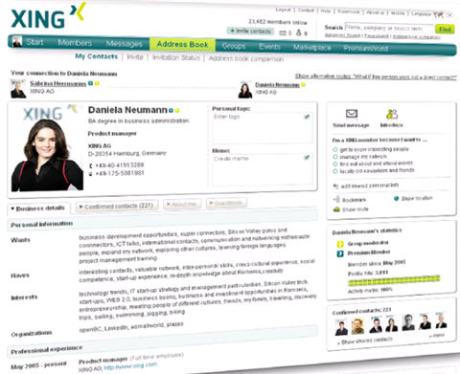
Xing profile
Xing is a German based business network that began in 2004. The network is structured for business and job purpose. The registration is free but practically all features can be used if a premium member is activated. All thou it is a business platform you don’t receive a receipt of payment.
Xing has 7 million registrations, Around 4 million are active users, others are considered sleepy due to its very passive activity. Xing has bought Neurona a Spanish business network in 2008. Hereby it has broken its German frontiers to enter a European playground of social networks. Numbers shows that 30% of its users are German ( or German speakers) another 15 to 20 % are Spanish users, the rest of the users are mostly European with the UK and Italy in front. To compare it with Linkedin, Linkedin has arrived to (March 2009) to 35 million users on which 60 % of the users in the American continent and growing number in India.
The other competitors of Xing is French based Viadeo.
On the free version you can customize your profile and add your known contacts to your profile. You can search for a job and you can be contacted by premium members.
If you register for the first time, you will have 6 months free premium memberships which provides you by far more features. The premium membership allows you to view and contact (indefinitely) any profile in the network. On Linkedin Premium it allows you to view profiles inside the whole network but the contacts are numbered by 5 a month. The premium membership provides its members to search and contact any profile, create and organize groups inside Xing, search and candidate to jobs or add jobs for a small fee.
The strength of Xing is its Multilanguage platform (16 languages including Chinese).
I have used Xing for talentscouting purposes and found it a very interesting application, also because you could use this application directly with your mobile, both downloading contacts as uploading. Linkedin premium costs 3 times more per month than Xing and it does allow you to sent only 5 mails per month, you can cumulate but what are 5 mails if you need to contact hundreds of people a month !? Xing allows you to contact indefinitely. Linkedin wins only by the numbers of registration. Xing has also another disadvantage, it has a lack on workspace application, which Linkedin has provided with a series of application, such as Box.net, Huddle, WordPress, Slideshare, etc.
This gives the profile the opportunity to use this platform as a workspace and stimulates crowdsourcing.
The future plans of Xing are new local marketing campaigns in order to promote this interesting business tool.
Real Life or Second Life

Second life
Several science fiction authors have predicted a world where humans will live as simulations. An illusion of a real world. All thou it was like living in another dimension, people were conscious of the fact that the world in question was not theirs. Since the first games emerged from the software industry, avatars were used as they obeyed to the player’s command. During all those years the graphic improuved as well as the interaction of the player. Virtual worlds were created to perfection.
Today there are two kinds of virtual worlds:
Massively Multiplayer online role-playing games
Massively Multiplayer online real life games
The internet evolutions has permitted players to join their games from all over the world simultaniously. The first kind of virtual worlds are games, where the player has a definite role an has to obey the game rules. The second type of virtual world has no rules whatsover and there is no goal attached to the game, it provides the condition to players as on the real life. VW such as Second life gives the users the opportunity to be part of its economy, avatars can work and do business, contribute to its environment by creating tools,clothes, buildings, buy real estate. There is even an exchange between real life money and second life money. Companies were quick to show interest in this new economy due to the fact that they were low to accept innovative economic structures such as Web 2.0 technology. Companies have their own advertisement, stores such as Apple or Nike have they own stores own second life where users can view the latest products. Selection agencies have already used this 3D platform in order to organize recruitment fairs or even selection.
Several scholars critize this new form of economic structure. They argue that Virtual worlds does not have many inhabitants, also people coming on second life, very few of them contribute to its economy. Also due to its high graphics only the latest computers can provide a user an adequate 3D sensation.
But on my opinion second life is just a pioneering site were the first real life simulation will be created. the whole internet will be a 3D simulation and companies must contribute to its development will be part of a future elite.
Besides Second life you have other Virtual worlds such as :
For others see page with list of online virtual worlds
In the future more virtual worlds will be created, portals are going to provide users jumps between one world to another. Sales online will grow on this 3D worlds, people will buy practically anything through this 3D worlds and exchange rates will provide an new kind of economic structure. Imagine a Facebook with 170 million inhabitants on a virtual world?
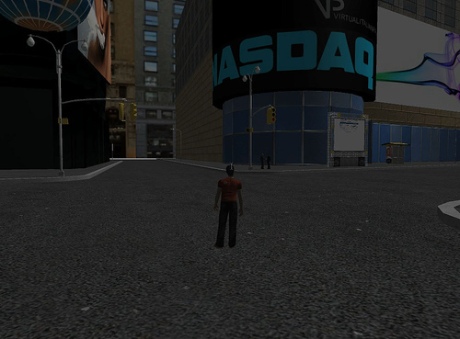
Moondus
Enter the Super Network
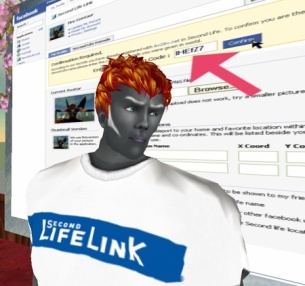
Facebook on Second life link your real friends and your virtual friends
Even the best Science fiction novels could not predict the future of humanity, interconnected as they are today.
The future of Social networking provides us plenty of surprises; what about talking to your friends online, while you are viewing your banking movements ! Imagine your are calling someone on Netlog via Skype and chatting with someone on Linkedin and Facebook simultaneously while you are working on Twitter and Xing or on Viadeo sharing files on Huddle or Weplus ! All that on the same network, a super network using 3D graphics such as second life, pc or mobile with portals through different networks interconnected for one purpose; to serve you !
This is not far from the truth, nowadays the online gaming industry has provided some interconnection between games, in order to switch between games bringing over your friends. Social networks are now entering into a mature faze, where they are monetizing their applications.
Only the biggest players will emerge from the crowd. This means that over hundreds of social networks, only a few will remain online to provide the user of all its necessity. Already today you can see some kind of a collaboration between social networks that allow users to add API’s from any network. In the future all networks are going to be merged into one network with all kinds of applications, from your office working station to a playground. The user will connect to the network and do everything it does both in the real life as virtual.
Second life is doing some steps towards collaboration with social networking sites such as Twitter, where you can connect in order to keep in touch with your projects. More and more applications will be added into the virtual world of second life. You will be on second life to visit shops online, buy clothes on virtual ebay, playing games, network with your friends online , through a portal that gets you to Facebook 3D on your mobile, seek business opportunities through Linkedin 3D or find a job on Secondlife Careerbuilders Portal. Another next level of web 3.0 application will be that people will share documents on 3D level through online platforms, working on their virtual office.
The world is changing tremendously, the economy is transforming towards a global networking collaboration, modifying to a complete new angle of the old hierarchical model of the Twentieth Century !
The changing in the economy is radical, more and more open source software’s are gaining notoriety. The way we think about an economic model of profits based on demand is changing drastically.
In order to understand the economic changes we must overview what was the economic model till now:
You invent a product, you sell the product with a profit margin in order to compensate the costs of production, use some marketing and sales and sell the product. Build a company with a capital that is based on bank loans, stock shares and sales revenues.
A simple product has a value on the market. The problem is that millions of people entered the global market with little purchase power. Now Both companies and consumers want to pay a low price to acquire a product ! In order to do that, you need to lower the costs of production. Previously companies closed their plants in their developed countries to move and rebuild them in the developing countries, but this was just postponing the problem. After the internet bubble in 2001 services and software’s were suddenly available for low prices or even for free on the market due to open source development. Companies such as Microsoft suffered from this change. It became known as the Web 2.0 economy “share, develop, collaborate, free”.
Companies need to accept the fact that they can lower the price of products such as low cost flights.
On the other hand consumers want to have quality from their products, the only way you can do that is to monetize the new web 2.0 economy.
The next step will be the collaboration between all networks, providing both quality of products and services for a low price.
Now after that the next step will be something similar to the matrix simulated world where people plug themselves into it, working and living into a virtual real world where it will be difficult to tell the difference between the real and the simulation ! I hope this time we will be conscious of the fact that it is still a virtual world !
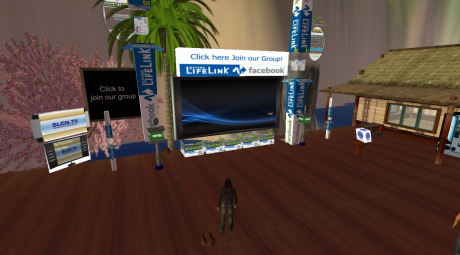
Snapshot from facebook link on secondlife
The six degrees of separation
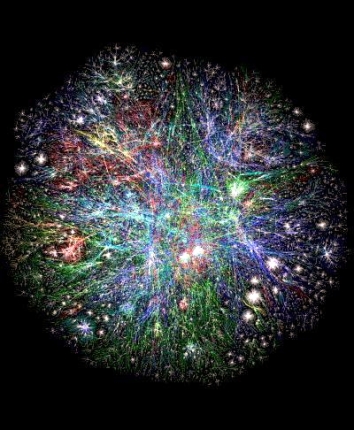
Web Nebula or cloud 2004
Is a theory that states that every person in the world is somehow connected to each other. In detail it refers to the idea that every person is at six steps away separated to each person on earth. Therefore you need at least 5 persons to complete the sequence.
The oldest writes about the human interconnections in probably the Bible, stating that somehow every human being is connected to each other like brothers and sisters of the same family.
Back in 1929, the Hungarian author, Frigyes Karinthy wrote some volumes about networks and human connections. He came up with the idea of a smaller world due to its connectivity between human beings.
Later in the Sixties, other tried to prove that every human being is connected to each other indirectly, called the small world experiment. All thou early attempts have been made Milligram’s was worth to be mentioned.
Milgram’s study results showed that people in the United States seemed to be connected by approximately three friendship links, on average, without speculating on global linkages; he never actually used the phrase “six degrees of separation”. Since the Psychology Today article gave the experiments wide publicity, Milgram and earlier researches all had been incorrectly attributed as the origin of the notion of “six degrees”; the most likely popularized of the phrase “six degrees of separation” is John Guare, who attributed the value “six” to Marconi ( the radio inventor).
DIGITAL ERA
In 2001, Duncan Watts , a professor at Columbia University, recreated Milgram’s experiment by sending an email called “the package” that needed to be delivered around the world. Duncan came to the average of 6 as the number of intermediates.
In 2007 another test has been performed on Microsoft Messenger analyzing more than 240 millions people conversations. Here the average has been found of 6.6 (recalling it the 7 degree of separation).
The actor Kevin Bacon has invented a game based on this theory: “Six degrees of Kevin Bacon” The concept is to link any actor to Kevin through six connections. Because Kevin has state that he has played with every actor in the history of Hollywood directly or indirectly !

Hollywood actor Kevin Bacon
Today with the power behind online social networks, we can assist for the first time in history the interconnection between human beings. All thou we know that a great piece of the planet does not have access to internet and not every one chooses the same social network to register to, we can have an idea of the power of interconnections.
Facebook, Myspace, Bebo and Netlog are the biggest examples of human interconnections. All social networks have combined together more than 500 million people registered ! These Social networking platforms shows the behaviour of human people towards common goals or interests. Both Facebook and Myspace communities with common interests and groups, working together to achieves specific goals, whether we are speaking about music, charity or business !
Linkedin provides you to see till the third degree of separation. I myself am connected on the first degree to 1,500 people around the world, but on the third degree am connected with more than 12 million !
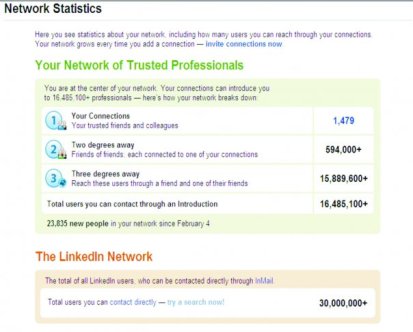
Network statistics on Linkedin
-
Archives
- May 2009 (1)
- April 2009 (4)
- March 2009 (4)
- February 2009 (5)
- January 2009 (4)
-
Categories
-
RSS
Entries RSS
Comments RSS

